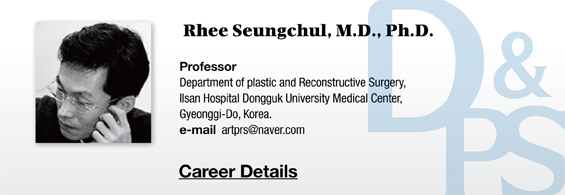
.jpg)
Figure 2. The photogrammetric analysis points in an averaged photograph.
However, the type of dental occlusion does not always determine the soft tissue or bone structure of the face and one should not rely on Angle’s Classification as an absolute standard. Surgeons performing jaw procedures should have accurate understanding of dental occlusion to obtain optimal aesthetic results. Therefore, knowledge on the TMJ’s anatomical structure and functions as well as complications, etc. are needed in for successful jaw surgery.
Let us look at the facial nerves. The buccal branch of the facial nerve pass over the mandible. The buccal branch passes through the parotid gland and innervates the surface of the parotidomasseteric fascia anterior to the master muscle. It lies above the buccal fat, parallel to the parotid duct, however, lowers to innervate the buccinators, upper lip and nasal muscles. The buccal branch of the facial nerve occasionally divides into a secondary branch which usually lies above the parotid duct.
Surgeons operating in this area also need to pay attention to the marginal mandibular nerve. The marginal mandibular nerve originates from below the parotid gland and has 1-3 branches. This nerve passes above the lower margin of the mandible in most cases but can pass even 4cm below the lower edge of the mandible behind the facial artery. This nerve emerges to the surface about 2cm posterior to the angle of the mouth and innervates the muscles that work to lower the lips. The marginal mandibular nerve lies deep within the platysma but is most frequently damaged and problematic during mandible reconstruction or aesthetic jaw surgery. The cervical branch of the facial nerve originates from under the ears, passes the hyoid in the neck to innervate in the platysma.
It is important to understand the anatomical characteristics of the inferior alveolar nerve for successful jaw surgery. This nerve is the mandibular branch of the trigeminal nerve and passes along the mandibular foramen to penetrate through the mental foramen and bifurcates into the incisive nerve that innervates lower anterior teeth and the mental nerve that innervates the lower lip. The inferior alveolar nerve is very thick but can be severed or pulled during surgery, which can result in sensory loss in the lower lip and lower teeth. The location of this nerve varies widely due to personal differences, gender, race, age and presence of teeth. It is advisable to accurately locate this nerve with X-ray or CT before surgery.3,4
[Advertisement] FCR® (Fractional Prickle CoralCalcium Regentron) – Manufacturer: (www.illglobal.com)]
As we age, the bone structure of the lower face continues to change. As long as there are teeth, the length and width of the mandible is known to gradually increase with age in both genders. On the other hand, the general public tend to falsely believe that the lower jaw shrinks with age. A recent study using 3D CT to examine the lower jaw5 of 120 men and women aged 20-64 years, found that there was little change in the bigonial width and ramus breath with age but the mandible angle increased with age, while the ramus height, body height and length statistically decreased in both sexes. Resorption of maxilla tissues adjacent to the piriform aperture occurs with age, causing the alar base to withdraw. This is a primary cause of the deepening of nasolabial folds6 and this may lead people to falsely assume that the jaws get narrower with age. Equipped with the above anatomical knowledge, it is important to now perform photo analysis of the face.
-To be continued
References
1. Nirmale VK, Mane UW, Sukre SB et al, Morphological Features of Human Mandible, International Journal of Recent Trends in Science And Technology, 3(2): 38-43. 2012.
2. Thayer ZM, Dobson SD. Geographic variation in chin shape challenges the universal facial attractiveness hypothesis, PLoS One. 8(4): e60681.2013.
3. Juodzbalys G, Wang HL, Sabalys G. Anatomy of mandibular vital structures. Part I: mandibular canal and inferior alveolar neurovascular bundle in relation with dental implantology. J Oral Maxillofac Res. 1;1(1):e2. 2010.
4. Miller RJ, Edwards WC, Boudet C. et al. Revised maxillofacial anatomy: The mandibular symphysis in 3D, Int J of Dent implant and Biomaterials, The original webite can be accessed at(http://smiledesigncenter.us/Mandibular%20Symphysis%20in%203D.pdf)
5. Shaw RB Jr, Katzel EB, Koltz PF, Kahn DM, Girotto JA, Langstein HN. Aging of the mandible and its aesthetic implications. Plast Reconstr Surg 125:332–342. 2010.
6. Mendelson B. Wong C. Changes in the facial skeleton with age: Implications and clinical application in facial rejuvenation, Aesth Plast Surg. 36:753-760. 2012.




















